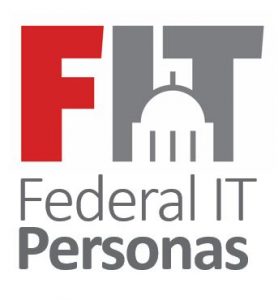federal IT
By Jonathan Sanders, Director, Research, GovExec
In October 2022, the General Services Administration (GSA) issued a draft RFP for Alliant 3, their latest governmentwide acquisition contract (GWAC) that aims to provide Federal Government agencies with integrated IT solutions services for evolving needs on a global basis.
“GWACs serve as a springboard for small businesses to grow,” said Exodie C. Roe III, Associate Administrator for the Office of Small and Disadvantaged Business Utilization.
This contract will allow for the application of technology to meet current and evolving business needs required to satisfy all IT requirements worldwide at any time, fostering a “Anything IT Anywhere” philosophy. This service contract does not have a specific ceiling, and will leverage a self-scoring approach for prospective bidders, which has worked on procurements including OASIS, ASTRO, HCaTS, and Alliant 2.
GSA anticipates that multiple awards shall be made up to a maximum of 60 awards to the highest scoring bidders.
As a restricted GWAC, small businesses are eligible to participate in the solicitation. The average value of each contract under Alliant 2 is $116M.
When asked about the planned features of Alliant 3, GSA mentioned:
- Providing an Unpriced Master Contract (subject to approval)
- Maintaining a Best-in-Class (BIC) solution designation
- Sustaining Standardized Labor Categories (LCATS) and the Prices Paid Portal
- No Master Contract Ceiling (subject to approval)
- Implementing Innovative Environmental and Sustainability Plans
- Enhancing the Customer Experience
- Increased IT Modernization Capabilities
- Performance Standard Improvement
- Provisioning for Regular Open Seasons
- Streamlining Proposal Submissions and Evaluations
- Increased Focus on Small Business through Subcontracting Plans, Performance Standards, and Evaluation Factor
Alliant 3 builds upon the successful Alliant and Alliant 2 GWACs. It is a new unrestricted enterprise GWAC that will have an increased focus on emerging technology, performance based contracting measures, small business subcontracting. It will also have open seasons and an environmental and sustainability plan.

Additional differentiating features in Alliant 3 include:
- Providing an Unpriced Master Contract (subject to approval)
- Eliminating a Master Contract Ceiling (subject to approval)
- Provisioning for Open Seasons opportunities
What this means for you
Alliant 2 received a $25 billion ceiling increase in August, 2022, bringing the total ceiling to a staggering $75 billion. With add ons and efficiencies for the Alliant 3 GWAC underway, one can expect a nominal increase in estimated value. Now is the time to prepare your business to get on the next GWAC.
Insights, Research, and YOUR Path to More Awards
GovExec’s Insights & Research Group (comprising Market Connections, Government Business Council, and Leading Brands) and GovTribe can keep you up to date on what is happening in this rapidly changing contract environment.
GovTribe is a collaborative platform that lends business development teams a hand through research and tracking of contracting vehicles as well as targeted intelligence on GSA Federal Supply Schedules, GWACS, IDIQs, and other multiple award vehicles.
Combining the data, insights, and expert analysis you get at Market Connections with the ease, agility, and usability of GovTribe can help you strategically position yourself right where you want to be for future opportunities.
Questions? Please reach out to Jonathan Sanders at jsanders@govexec.com.
Guest blogger: Kris Brinker, Ocean 5 Strategies
There is no such thing as doing business with the federal government. We do business with people—government decision-makers, federal humans—who all have goals, fears, needs, priorities, and pain points.
The US government continues to offer opportunities as the largest public procurement marketplace. Just a small piece of the federal pie would be a huge win. But, the hurdles and barriers government contractors need to overcome have not only changed but also become greater.
The customer base for government contractors is becoming harder and harder to reach and contractors have to do more than ever to break through. New marketing techniques and technologies must be considered to stay competitive.
According to respected government business strategic advisor and published author, Judy Bradt, ”Many GovCons use databases to look for their next opportunity and can waste THOUSANDS of dollars and hours chasing work. That’s ’Opportunity Illusion.’ Instead of asking, ’What can I bid?’, winners focus on the right question: ’Who’s my buyer?’ ”
You need to build brand reputation and visibility long before the RFP. You also need to continue building those relationships with buyers and decision-makers throughout a long sales cycle.
Combining this with a fundamental shift in the way people are making purchasing decisions, means you need new and innovative marketing strategies to stay on top and win contracts.
Enter Buyer Personas, a Winning Strategy
Buyer personas are semi-fictional representations of your ideal customers based on qualitative and quantitative data and research. Creating and having a deep understanding of your buyer persona(s) is critical to content creation, sales follow up, product development, and customer acquisition and retention.
Federal Personas to Support Your Federal Content Marketing
Creating content with a detailed persona of your federal buyer in mind allows you to go beyond agency needs and shows them you can speak to their goals, needs, pain points, and fears—both professionally as well as personally. It allows you to create your educational materials and marketing messages from a voice of empathy, not selling.
“Many government decision makers want to learn about new things, while others need justifications for existing decisions, depending on their role and personality” said Aaron Heffron, president at Market Connections, “our past review of federal content preferences and the differences between various individuals shows that by effectively delivering quality content that’s on-point and directly relevant, you show your commitment to being a partner, not just a vendor”
Past performance and accuracy of language in a bid are no longer the only keys to winning the contract award. Today, B2G companies must compete to attract buyers to their brand by providing compelling, quality content tailored to meet their specific needs, behaviors and concerns.
By first developing a clear vision of your federal persona, you can tailor your content to meet their specific needs, behaviors, and concerns. Focus on your carefully refined buyer personas and produce the content they want to consume in the format that is most appealing to them. For example, the agency contracting officers you need to influence might be most interested in information in video format, while a senior executive may prefer to read about your capabilities in the form of a white paper. By understanding your personas’ preferences, you can better understand how to personalize your content just for them.
How Do I Start Creating Federal Personas?
A good starting point is to take a look at your current clients and start to tell a story about their purchasing behavior, goals, challenges, needs, etc. You may even want to begin by experimenting with default personas available in some email or automated marketing platforms, then supplementing them with your own. Remember, your federal personas will be semi-fictional representations of your ideal customers based on qualitative and quantitative data and research. The strongest buyer personas are based on market research as well as insights gathered from your actual customer base (through surveys, interviews, etc.).
You may need as few as one or two personas, or as many as 20, depending on your business. If you’re new to personas, start small—you can always develop more personas later if needed—but get started! When possible, avoid reinventing the wheel and use information already in the market. Also consider personas developed by reputable independent market research and specialized federal marketing firms as a first step into your persona development. I was excited to discover that in July 2020, Market Connections will begin releasing their federal persona bundles—developed from their research and interviews of 300 federal IT decision-makers.
Purchase Market Connections Federal IT Personas bundles.
Summary
With hundreds of billions of federal contract dollars to compete for, a fundamental shift in the way people are now making purchasing decisions, and continually changing technology, companies that market to government agencies have more hurdles than ever to win contracts. Creating and implementing federal personas is a key component of a modern B2G winning strategy. Utilizing existing market research can save you time and increase the accuracy of your content development.
 Kris Brinker is co-founder of Ocean 5 Strategies. With a track record of helping their customers grow their businesses, Kris and the Ocean 5 team specialize in award-winning website design, SEO, content marketing, and related digital marketing services. Connect with Kris on LinkedIn.
Kris Brinker is co-founder of Ocean 5 Strategies. With a track record of helping their customers grow their businesses, Kris and the Ocean 5 team specialize in award-winning website design, SEO, content marketing, and related digital marketing services. Connect with Kris on LinkedIn.
Ocean 5 provides marketing plans, strategies, and programs that generate more highly qualified leads, more closed contracts, and increased profit. Ocean 5 clients have enjoyed benefits such as 500% ROI, 600% increase in client acquisition, 218% increase in profit, and 216% increase in conversion rates. You can find more information at Ocean5Strategies.com
Guest Blogger: Chris Parente, StoryTech Consulting
If you want to successfully market a product or service, you need to understand everything you can about who your targeted decision-makers are and what they care about. A way to increase your understanding is the development of marketing personas.
Per Wikipedia, “a persona in user-design and marketing is a fictional character created to represent a user type that might use a site, brand, or product in a similar way.” The definition goes on to say that “in most cases, personas are synthesized from data collected from interviews with users.” The “garbage in, garbage out” rule applies – personas are only as good as the research used to create them.
Recently I attended the Federal IT (FIT) Persona Study – A Deeper Look into Your Federal Customer. It was a virtual event put on by Market Connections with support from their marketing partners, Professional Services Council and Government Marketing University. Market Connections has been doing B2B and B2G research for over 20 years, providing actionable intelligence to support marketing and business outreach strategies. They are probably best known in B2G circles for their annual analysis of the media consumption habits of government decision-makers, a must read for government marketers.
Market Connections interviewed over 300 federal IT decision-makers, both inside and outside the beltway. There were also additional in-depth interviews with key federal personnel to round out multiple personas detailing personal and professional preferences. Spoiler alert – there is no single federal IT persona that covers all decision-makers.
As part of the overview presentation, two of the ten available federal personas were shared with registered attendees, a program manager working for the Veterans Administration out of Texas, and an IT specialist in D.C. working for the Department of Health and Human Services. These are valuable for government marketers, whether as a foundation to build upon or as a “sanity check” to compare to their own federal personas.
Some overall results that caught my eye:
- What inspires them – The top two responses were feeling they are making an important contribution and doing their part for the mission.
- Top professional challenges – Nearly half cited slow bureaucracy, followed by one-third stating needing to do more with less budget.
- Who they have confidence in for technical decisions – Two-thirds trust their team members, however, ONLY 16 PERCENT trust contractors/vendors! Caveat emptor indeed!
Within the two federal personas shared, key differences were seen, for example their motivation to learn about IT:
- The IT specialist valued being viewed as the internal expert.
- The program manager felt technology changes quickly.
In addition, differences were found in how they preferred to learn, communicate, and gather information; challenges they faced in their roles; what they sought most from vendors they worked with; among others.
After the survey presentation there was a panel discussion moderated by Aaron Heffron, president of Market Connections. The panelists were Christina Morrison, Federal Solutions Director at the cybersecurity provider Proofpoint and Tom Nagle, Managing Partner at the management and marketing consultancy Statler Nagle LLC.
Christina talked about using personas during her time at HP, and how people naturally want to buy from people they like. She made the point that personas are important no matter the size of your budget, and that they fit perfectly into an account-based marketing (ABM) approach that unites sales and marketing objectives.
Tom cautioned marketers against thinking that buying decisions are entirely rational. He told the audience that personas were an effective way to “market to the whole human.” He also said that personas support framing your messaging as storytelling, which is a prerequisite for success. (Amen Tom!)
The presentation and video of the results readout can be purchased here. Early in July, Market Connections will release their federal persona bundles developed from the research. These will cover additional decision-makers and influencers in IT purchasing from the CIO to the procurement professional at both defense and civilian agencies.
Understanding your target market is a never-ending process. Personas based on quality market research help immensely.
 Chris Parente is the founder of StoryTech Consulting LLC. He has over 20 years of experience in IT communications, working for organizations such as the Cellular Telecommunications Internet Association (CTIA), Advertising.com and VeriSign. From 2005 to 2014 he served as Managing Director and Partner at Strategic Communications Group. StoryTech Consulting has helped clients such as VMware, FireEye, Leidos, Ruckus Networks and Government Executive Media Group meet their content marketing objectives. For more information visit https://storytechconsulting.com/
Chris Parente is the founder of StoryTech Consulting LLC. He has over 20 years of experience in IT communications, working for organizations such as the Cellular Telecommunications Internet Association (CTIA), Advertising.com and VeriSign. From 2005 to 2014 he served as Managing Director and Partner at Strategic Communications Group. StoryTech Consulting has helped clients such as VMware, FireEye, Leidos, Ruckus Networks and Government Executive Media Group meet their content marketing objectives. For more information visit https://storytechconsulting.com/
Sales and BD Teams
In part one of our blog series “How Contractors Can Use Federal Personas for the Win,” we shared the importance of getting internal team buy-in from leadership to marketing to sales. In addition to ways federal marketers can benefit from the use of personas, we noted the importance of collaboration between the marketing teams and the sales and BD teams to get the most out of federal personas.
Federal personas can, and should, be living documents that are tweaked by newly gathered information. Sales teams can add key insights from their day-to-day frontline experience, as part of persona building. It is important to note, however, that federal personas are not actual individuals, but archetypes of the players around the “decision-making table”. While sales teams can contribute to confirming or challenging the notions of personas, it is important to do so based on facts, rather than assumptions. Exceptions to the persona will always exist.
How Can Federal Sales Teams Benefit from Persona Building?
 Sales teams should use federal personas to ensure customer-centric conversations. By focusing on more than just specific agency needs, federal sales professionals can better connect with individuals even before their first conversations. Well-constructed federal personas can provide personal backgrounds that make those first conversations easier and more familiar.
Sales teams should use federal personas to ensure customer-centric conversations. By focusing on more than just specific agency needs, federal sales professionals can better connect with individuals even before their first conversations. Well-constructed federal personas can provide personal backgrounds that make those first conversations easier and more familiar.
A federal persona can help guide you well before your first contact. Should you reach out to your contact via email, or are they more likely to prefer to meet you for a coffee and in-person discussion? Actual results may vary, but the predilections outlined in a well-constructed persona can give you a jump start and increase your odds.
When the conversation begins, seeding the discussion with known challenges and issues can speed up your due diligence and accelerate the process. Senior executives may have very different challenges than an end-user. Laying out those challenges before they have a chance to mention them builds a certain level of trust between you and the client. Now, as a trusted advisor, you can move the conversation forward to how you and your company can offer support and solutions to those challenges.
Sales team leaders should consider using federal personas when developing sales tools for their teams. Unique, segment specific playbooks and sales guides can allow those new to the market to hit the ground running as well as provide new insights for the long-timers on the team. Used as part of regular sales trainings, these shared tools can be enhanced with use cases from team members at regular sales meetings.
Ultimately, the use of federal personas may either challenge existing assumptions about your customer or confirm what you already see in your established relationships. Either way, the dialogue that comes about can make for a more dynamic discussion with the client, a good introduction to new sales members, and a reminder to those in the field that what has been considered true may not always be.
Learn More about Federal Personas:
Purchase the overview report and corresponding video readout:
Federal IT (FIT) Personas Study: A Deeper Look into Your Government Customer
FIT Personas will be available for purchase soon and will be found on the same page as the overview report.
Marketing Teams
Our latest blog post “Beyond the C-level Suite” emphasized the importance of marketing to both federal IT decision-makers and influencers at agencies in different ways. Detailed personas for each federal influencer, from senior executive to procurement staff to end user can crystalize your approach and give you guidance as to the unique personal and professional challenges that can influence how and why they make decisions. In part one of this series, we’ll focus on how marketing teams can use federal personas to guide their strategy.
Originating in the consumer market, personas used for B2G will differ in their area of emphasis and approach. While B2C companies focus exclusively on their target customer, B2G marketers must blend the influences of the agency culture with the preferences and habits of the individual. To date, most B2G marketers have focused heavily on the unique aspects of agency culture and processes. We believe that on top of this marketing strategy, it is important to understand the personal motivators and opinions of specific decision-makers and influencers within the agency that is purchasing your product or service.
If you have already made the investment in creating unique federal customer personas, the journey has just begun. There are several next steps to get the best out of your efforts.
Share, Share, Share!
 Federal personas are only effective if you are sharing them across your company, from leadership to marketing and communication teams to sales teams. Educate up and down your organization to consider how each persona plays a part in decision-making. To ensure all teams are considering personas in their sales and marketing efforts, post your personas in visible locations and discuss them frequently in cross-team meetings to incorporate the individual natures of each decision-maker into your company culture.
Federal personas are only effective if you are sharing them across your company, from leadership to marketing and communication teams to sales teams. Educate up and down your organization to consider how each persona plays a part in decision-making. To ensure all teams are considering personas in their sales and marketing efforts, post your personas in visible locations and discuss them frequently in cross-team meetings to incorporate the individual natures of each decision-maker into your company culture.
For Marketing Teams:
Plan your content to be rooted in the agency mission but tailored for specific individuals. This includes adjusting for topic, tone, depth and distribution. You would not market the same way to an executive as you would to an end-user. Their priorities, backgrounds and values may be different. Some may value being viewed as an expert in their jobs, while others value the security that their job provides them.
Furthermore, a tech-savvy end-user, may prefer to watch a video or webinar to learn more about new technologies while a program manager or senior executive may prefer to read about new trends and technologies in a white paper. What is their preference for learning mediums? How do they prefer to receive information?
In addition to the learning style differences, key influencers and decision-makers may prefer different ways to access information. Across the board, marketers understand the importance of SEO, but are you considering other channels for marketing to different federal personas? While one individual may prefer to directly go to a vendor website or video, others may prefer to get information from associations, industry publications or events.
In addition to preferences, use tools like the Federal Media & Marketing Study to understand what publications and websites they’re going to already in order to focus your media and advertising efforts there.
Learn More About Federal Personas:
Purchase the overview report and corresponding video readout:
Federal IT (FIT) Personas Study: A Deeper Look into Your Government Customer
The FIT Personas bundles will be available for purchase soon and will be found on the same page as the overview report.
The Importance of Influencer Personas for the Win
How many times have you sat around a table, planning your next campaign and someone says, “We should just target CTOs, CISOs or CIOs – they make the final decision…”? We’re often faced with the same statement by public sector marketers who are looking to find out specifically what agency plans are and the likelihood their company would be short-listed for an upcoming opportunity. Are senior executives the only type of federal persona to consider for the win?
One Can Say “Yes,” But Many Can Say “No”
 When prodded further about their marketing plans, the goals stretch far beyond just getting in front of a specific CTO, but rather to increase the overall likelihood their company will make the final consideration list for specific contracts or broader multi-agency contracts. Based on this, we employ a research plan that identifies not only the likes and dislikes of the C-level executive, but more importantly, the general disposition of all those at the agency who, in some manner, participate in the product and vendor selection process. These are the influencers that can say “no” before your company ever reaches final consideration.
When prodded further about their marketing plans, the goals stretch far beyond just getting in front of a specific CTO, but rather to increase the overall likelihood their company will make the final consideration list for specific contracts or broader multi-agency contracts. Based on this, we employ a research plan that identifies not only the likes and dislikes of the C-level executive, but more importantly, the general disposition of all those at the agency who, in some manner, participate in the product and vendor selection process. These are the influencers that can say “no” before your company ever reaches final consideration.
As part of our 2020 efforts to inform the public sector marketing community, we have been constructing descriptive personas to help guide marketing strategy, language and execution. The chief executive is not the only federal persona at the agency you should rely on if you want to influence decision-making towards your product or service. To truly understand your agency’s challenges and priorities, you must expand your reach to include decision-makers AND key influencers.
Understanding the perspectives of decision makers and influencers throughout the agency is especially critical for federal IT purchasing. In addition to executives, key influencers for major purchasing decisions can range from a procurement specialist to a program manager or even an end user. Within a single agency or contract, the different players around the table have varying priorities, challenges and pain points that need to be overcome, and your marketing efforts need to reflect this.
Role of Personas in Your Federal Marketing
When creating marketing materials to engage key influencers, marketers need to consider the varying personality styles and preferences, sometimes more than levels of expertise or technical skills. How do they prefer to communicate? Where do they seek more information? What do they value in a contractor? Would you market to someone in an IT role the same way you would market to a procurement specialist? Once you have a good understanding of the similarities and differences of each individual, you can use this information to ground your marketing efforts to ensure you are marketing towards their personalities and preferences.
Successful government marketers understand that their efforts may need to be multi-faceted and approaches may need to vary. While one signature is required for that multi-million (and even billion) dollar contract, there may be a dozen people behind the scenes that are helping to make the final decision. In federal IT, where mission rules, stakes are high and contracts are huge, having an in-depth understanding of the complex cast of characters that guide the final decision leads to successful marketing to those key players, which in turn can help lead to that win.
Learn More
Join our virtual event: Federal IT Persona Study: Deeper Insight into Your Federal Customer
Thursday, June 11, 2020, 2-3:30 PM EDT

FIT Personas Study:
A Deeper Look Into Your Federal Customer
Date: Thursday, June 11, 2020, 2-3:30 PM EDT
This is a virtual event.
Join us for the first study release in our new Federal Information Technology (FIT) series designed to help you get closer to your federal technology customer.
The FIT Personas Study will highlight the different profiles of individuals that influence and make decisions for IT products and services at the federal level. Personas have been an increasingly popular tool to identify and pinpoint specific personal and professional factors that influence the decision-making process. Combining qualitative and quantitative feedback, these results will help you understand what makes your customer tick, both personally and professionally, and provide you key insights to inform your marketing and business outreach strategy.
Study results will be followed up with a panel discussion with key federal marketing professionals on how they use personas as part of their federal marketing practices.
EXCLUSIVE TO EVENT ATTENDEES:
Those attending will have exclusive complimentary access to the report. On July 6, 2020 the overview report and detailed personas will be available for purchase to the general public.*
COST
- $59 (includes access to report)**
PANELISTS:
 Christina Morrison, Federal Solutions Director, Proofpoint
Christina Morrison, Federal Solutions Director, Proofpoint
 Tom Nagle, Managing Partner, Statler Nagle LLC
Tom Nagle, Managing Partner, Statler Nagle LLC
AGENDA:
| 2:00 PM – 2:40 PM | Welcome and study results presentation |
| 2:40 PM – 3:15 PM | Panelist discussion |
| 3:15 PM – 3:30 PM | Q&A with audience |
Thanks to our marketing partners:
**PSC members: Contact Mari Canizales Coache (mcanizales@govexec.com) for member discount code.
*The 2020 FIT Personas results reports will be available for sale to the general public on July 6, 2020 starting at a price of $99.
But There Is Still Work to Be Done
Over the past 5+ years, Market Connections has surveyed and interviewed thousands of federal employees about agency challenges and needs that could be addressed through IT modernization. It is heartening to see that all the technology and work performed by federal IT contractors over the past half-decade has paid off at a critical time during which the need for federal telework has escalated.
This was further confirmed in a recent article from WorkScoop, which highlighted key insights into how federal agencies were prepared for and responded to necessary telework activity during COVID-19. Thanks to recent IT modernization efforts, many agencies had the technology in place to handle telework requirements. Investments in agency technology, such as the adoption of cloud services and collaboration tools, led to federal agencies being much more prepared for the 2020 health crisis. And while most agencies had the infrastructure in place for an eligible portion of their workforce, most agencies still struggled to transition and keep “business as usual.” Despite all the infrastructure and technology in place, agency culture still lagged in many places.
A New Normal

A Market Connections PulsePoll™ of federal IT decision-makers’ response to COVID-19 found that half of respondents were not (or very rarely) teleworking prior to the pandemic, compared to 90 percent who are currently teleworking at least part-time.
Agencies had to work to prepare staff for the new normal brought on by the need to telework. This included helping staff become familiar with technical aspects of telework (including video conferencing platforms and evolving security requirements) along with the human aspects of telework such as managing remote employees and ensuring comfort levels for employees working from home.
“It took an event of forced acceptance to get comfortable,” Federal CIO, Suzette Kent said (according to the article). She also stated, “Now that somebody’s [teleworked], and they’ve done it every day for 30 days, it’s not scary anymore. This crisis has shown people that we can successfully work differently.”
What Does This Mean for the Future?
The mission is NOT accomplished for the federal IT contractor supporting IT modernization efforts. The basic building blocks are in place, but the key question will be what are agency needs come 2021? As agencies slowly and cautiously reopen to traditional work environments, to what extent will current habits begin to change the future norms? While forcing their employees to keep business as usual during and forcing them to quickly adapt, will this open the door for new telework policies across the board?
According to our ongoing poll, three-quarters of respondents envision working at least part-time in the future. However, many acknowledged that the current situation forced the hand of many supervisors and managers that were hesitant. It will be important to keep an ear to the ground later this year to see which way things go.
Finally, according to the article, Kent says while she hopes to continue to knock out some of the bad things in this situation as quickly as possible, “We’ll also take some of the learnings, the resiliency and the open eyes to what can be done in a digital and virtual environment and save those and use them as a spring for the future.”
Learn more:
- Download the report: How Has COVID-19 Affected Your Federal Customer?
- Read the full WorkScoop article.

Clockwise from top left: images from Terminator, I, Robot and Matrix
Artificial Intelligence (AI), Intelligent Automation (IA) and Robotics Process Automation (RPA) – should we be worried about machines taking over the world? Could Skynet or VIKI really happen in our not-so-distant future? Are we headed towards a Matrix society, or more realistically, should we be worried about our own jobs?
While Hollywood may have captured a more fearful version of a world with AI and robots, in real life, this technology surrounds our personal lives. Just ask Siri or Alexa. From auto-filling words when we start typing to providing us driving directions and recommending our next purchases (surprisingly, to our taste), AI has made our smart homes, smart phones, and virtual assistants ubiquitous in our day-to-day lives.
Federal agencies are also looking at ways that AI and IA can help them streamline processes and become more efficient. They are experimenting with AI for email management, data center optimization and efficient accounts payable, hoping it can help limit administrative hours, improve quality, reduce human error, increase compliance and help agencies add new services to their portfolios.
We recently attended an event hosted by ACT-IAC to get a better understanding of where the market is in terms of AI. Professional organizations such as ACT-IAC allow industry and the public sector to convene and share their challenges while showcasing some current use cases and best practices others might want to implement. Whether you are an agency looking to incorporate AI or a contractor looking to support your agency customer, below are some key takeaways from the event.
- Organizational prep is key.
Start by ensuring the agency’s organizational culture is ready for a monumental change. Before you introduce this strategy, ensure buy-in from leadership and subject-matter experts and that management is involved in the process. Take note of your IT resources prior to embarking.
- Quality of data is important.
In the process evaluation, understand where technology is best applied, and whether the data you have is quality data that when fed, could provide smart outputs. Since AI drives decisions from data by creating an algorithm model from the data points to provide future predictions, the success of AI implementation is dependent upon the ability for AI to manage that data. Create an ecosystem of data sets and platforms.
- Failure is okay.
As part of the planning and prep process, don’t try to “boil the ocean.” Look for quick wins or the lowest hanging fruit. Instead of trying to tackle the enterprise, look for small problems within your work that could benefit. It’s okay to fail as you build out to allow you to course-correct. This may lead you to consider whether to repair or retire attempts. Instead of looking for results in a year, look for smaller outputs every three to six months.
- Look to agencies who are already incorporating these.
Agencies are already embarking at technology incorporation at smaller agencies or department levels. For example, the Department of Treasury is already testing chatbots to support and streamline customer service. The Department of Homeland Security is looking to use AI to help cull data from CPARS to support procurement professionals looking to have a better understanding of vendors. By looking at how other agencies are testing the waters, you can find learning lessons in their mistakes and successes.
Learn more:
ACT-IAC recently released a resource put together by the Artificial Intelligence Working Group, ACT-IAC Emerging Technology Community of Interest: AI Playbook for the US Federal Government. This playbook proposes a process and a series of phases to support the United States Federal Government in its understanding and application of artificial intelligence (AI) technologies to support its mission.



